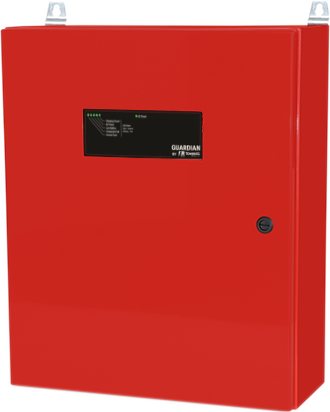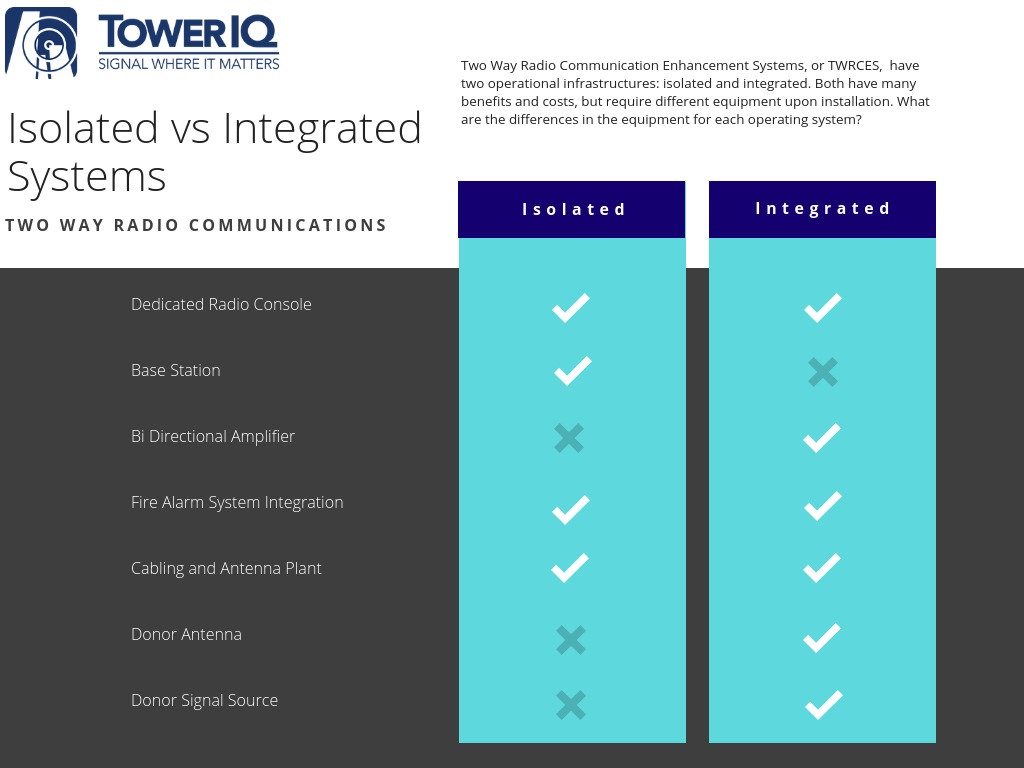 TowerIQ Introduces GuardianB, Guardian BBU, and Guardian TQ-ANN Annunciator for Enhanced Emergency Response Communication
TowerIQ Introduces GuardianB, Guardian BBU, and Guardian TQ-ANN Annunciator for Enhanced Emergency Response Communication
Two-way radio communication systems have two operational architectures: isolated and integrated. Both isolated and integrated system types have significant benefits for emergency responders but pose contrasting risks based on what is needed by the FDNY and property manager.

With the implementation of new construction codes in New York City, all buildings undergoing renovation or construction are required to support the Fire Department of New York's two-way radio communication systems.
Isolated Operations Systems
Isolated operation systems are, as the name implies, operationally isolated. These Two-Way Radio Communications Enhancement Systems, or TWRCES, are designed to intentionally limit the radio coverage to the singular building structure. The concept of having an isolated operational system may seem inefficient; however, past firefighter phones used this system to provide full communications coverage exclusively to a single structure. The isolated two-way radio system operates in a similar capacity but uses wireless rather than wired communications. Isolated operational systems typically require activation from the emergency responder in charge of incidents. The incident commander will locate a Dedicated Radio Console, or DRC, and initiate a system activation by using the elevator recall key. When first responders enter the building, certain channels will be selected.
The Benefits:
The Costs:
Integrated Operations Systems
The Integrated Operations System is architecturally more complex than an isolated system: rather than a building being a silo, or having its own dedicated source of a radio frequency signal, or RF, it enhances the signal previously provided by your DRC infrastructure. This type of system enables the same radio channel(s) utilized at street level to be received seamlessly inside the structure without an interruption in service! All emergency responders, including police officers, emergency responders, and medical teams can maintain communication upon entering the same building. Integrated systems are efficient because it is constantly retransmitting any signal received from inside the building to the Donor Signal Source - no activation is needed. With a properly engineered cabling and antenna plant, the transition in communication from the street to a building will be effortless.
The Benefits:
The Costs:
TowerIQ’s Recommendations
If there is a likelihood of multiple in-structure incidents in your community at any given time, we highly recommend an isolated system. This gives your local emergency responders to give one individual control and command of the emergency.TowerIQ does not recommend that police and medical personnel rely upon isolated systems, as they are more likely to face issues while in transit - an incident that spans multiple structures and can cause congestion. Additionally, the Integrated System poses its own set of risks with high severity, requiring specific health monitoring requirements to be strictly enforced.
Do you have specific questions about which operating system would be best for your building? Contact us to schedule a meeting with one of our channel managers.